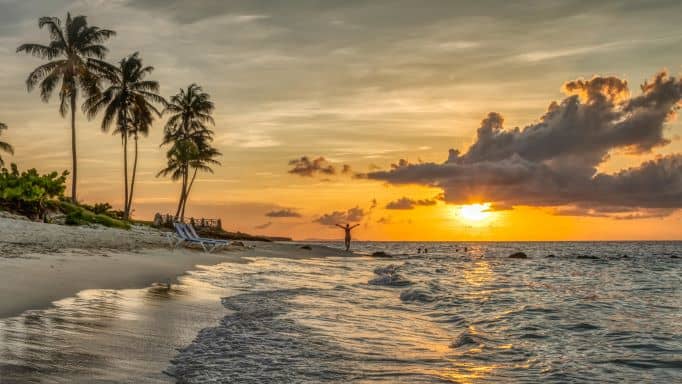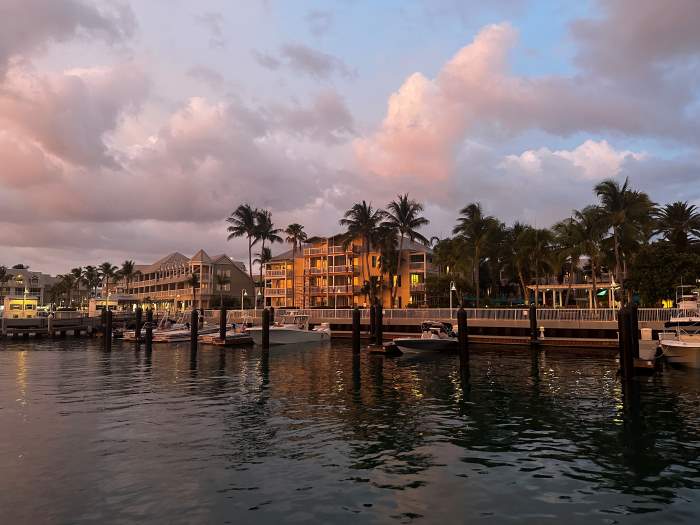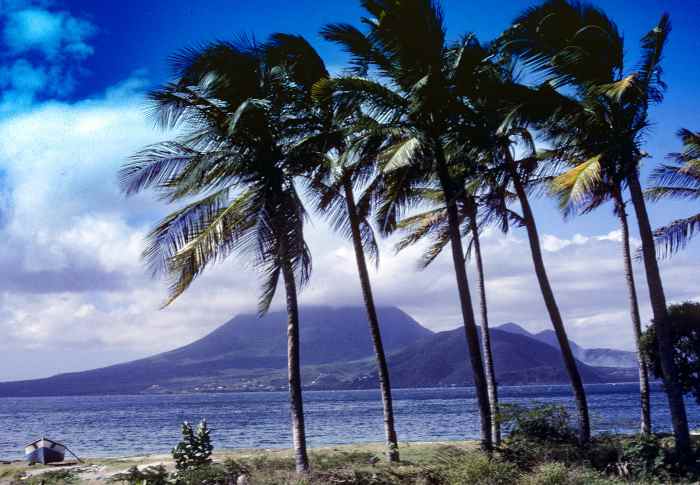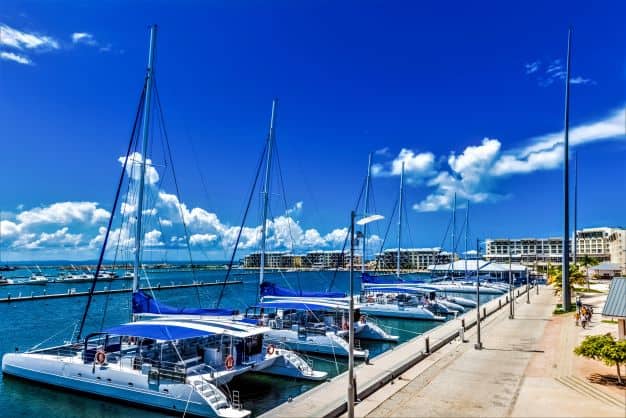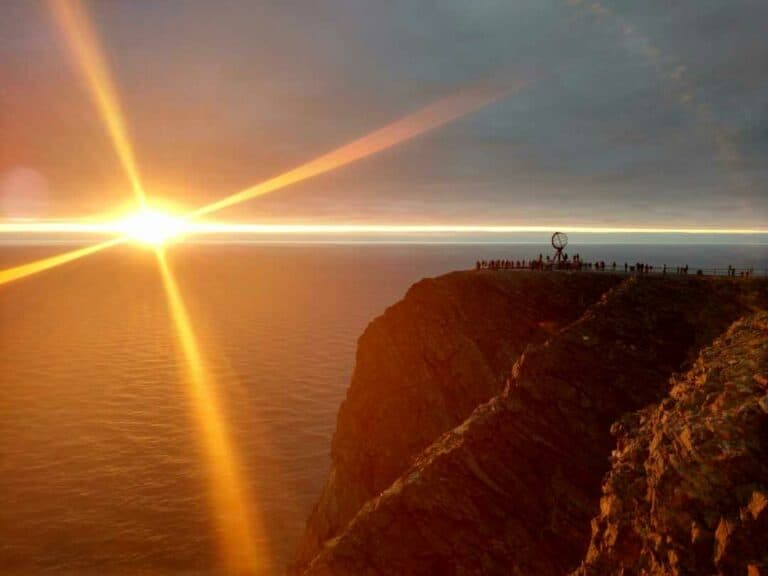What is Cuba known for other than Fidel Castro, Che Guevara, and the revolution?
After traveling regularly to Cuba for five years, speaking the Cuban language (and the slang), and being based in Old Havana for two years, I am starting to get a whiff of the complicated, versatile picture.
Being a bit of a history nerd, I have also researched quite a bit about the history, famous people, and weird incidents that made headlines across the world decades ago. Shaping the development and current state of this still lingering enigma.
So here are some of the interesting things Cuba is known for, in my opinion, that you might find fascinating to know if you are thinking of visiting!

What Is Cuba Known For?
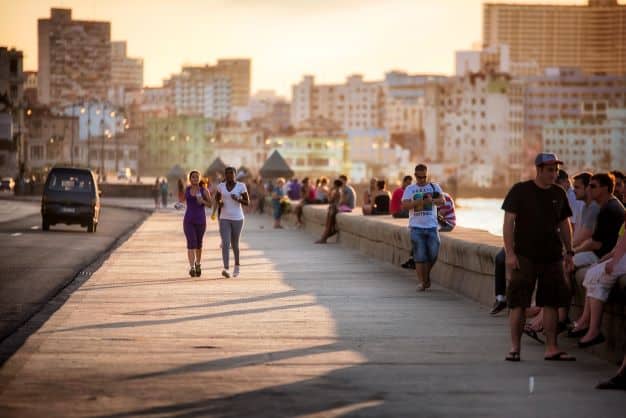
Historical and political conundrums of the past probably overshadow many other unique and amazing details.
Like that Cuba is home to many iconic landmarks, UNESCO-protected sites, natural reserves, and centuries-old fortifications.
But even after staying for long periods of time, I still don’t get it all.
22+ Unique Things To Know About Cuba!
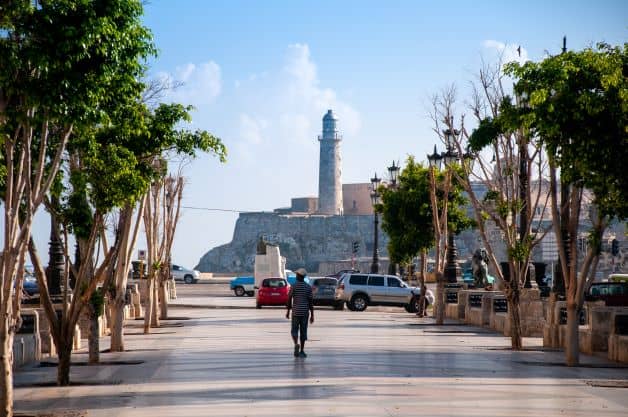
1. Contrastfilled Havana | The Capital Of Cuba
At the end of 2019, Havana celebrated its 500-year anniversary with fanfare and fireworks. Five millennials of motley history and traces of three continents were celebrated.
Life in Havana is like nowhere else; it is noisy, filterless, and immediate. The city is filled with history, fine arts, grocery carts, music, garbage, rubble, and people making ends meet from day to day.
If you walk a little outside Obispo Street in the old city and the tourist trajectory, you don’t have to go far to experience the real Havana.
The Old Havana Ancient Splendor
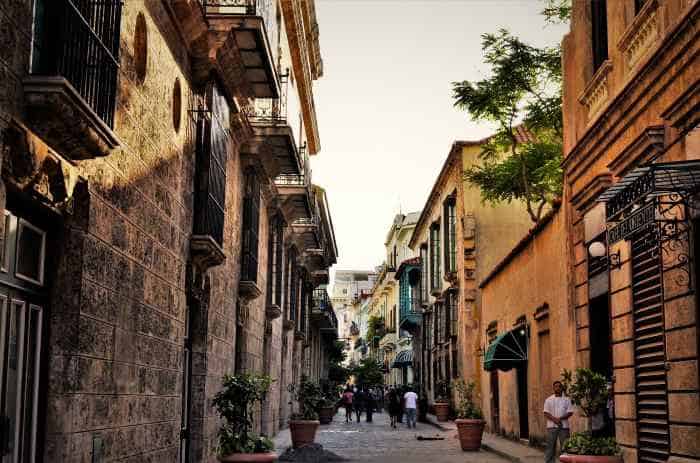
The streets of Old Havana have storytelling details everywhere for the keen eye in architecture, art, and structure.
Cuba is known for its old fortifications like El Morro, side by side with colonial-style venerable houses, bars, museums, cats, and dogs. The ambiance in Old Havana is unique, beautiful, neglected, and yet, so full of life.
The contrasts here are staggering, and staying in Old Havana will put you right in the middle of the colonial Cuban ambiance and historic landmarks.
Eclectic Central Havana District

Central Havana grew slowly towards the west as the old city became too small for its population. Today, it is a vibrant neighborhood where Cubans live in the decaying streets amidst markets, laundry, and old cars.
The architecture in Central Havana is similar to the old city but is characterized by being built to accommodate the population rather than being a display of grandeur. There are also some wonderful restaurants here.
Central Havana lacks the eminence you see traces of in Old Havana and is probably the truest depiction of what Havana is for habaneros if you don’t count the suburbs.
Posh El Vedado & Miramar
Further west is the Vedado district, with the wide avenues, parks, mansions, and embassies of today.
The architecture here is a conglomerate of colonial-style mansions and modernist expressions like the famous Cine Yara cinema.
This iconic building was constructed in the 1940s as part of the “Modern Movement” in Cuba, designed by architects Emilio de Junco III, Miguel Gaston, and Manuel Dominguez, and operated by Warner Bros.
And then you have Miramar, the financial district and home of presidents, business centers, as well as resorts and high-end culture.
2. What Is Cuba Known For If Not Cigars?
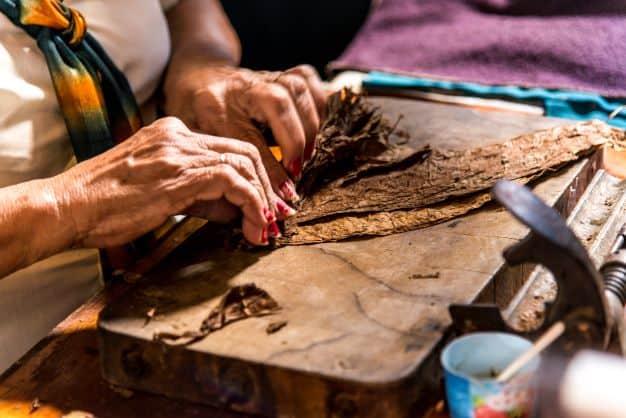
Cuban cigars are probably the most famous thing Cuba is known for.
The myth has it that every Cuban cigar is rolled on the thigh of a virgin, but I have witnessed firsthand that that is not, at least not always, the case.
Cigars are a huge export industry for Cuba despite US sanctions. China is the world’s number one buyer, while Europe has second place, and even Americans make up around 20% of the customers!
There is a long list of different brands and types of Cuban cigars, every cigar farmer tries to put his own particular sabor; or taste, to it. You can get a hold of real Cuban cigars online if you are not planning to visit Cuba any time soon.
But if you do visit, go to the fertile valley of Viñales to see how it is done. Here, you can buy a bundle of cigars that was made only five minutes ago while you were watching.
3. Varadero Beach | World Second Place 2019
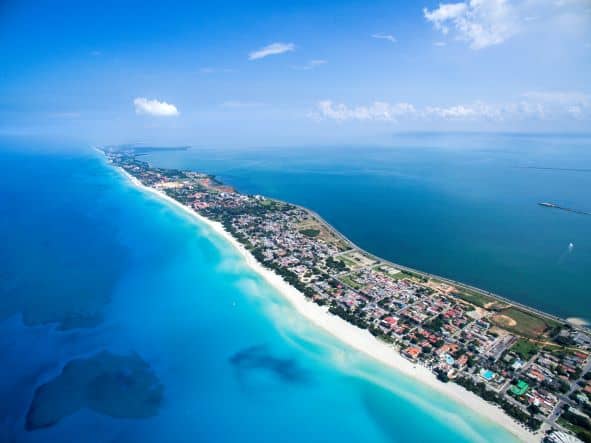
There are an infinite number of beautiful Caribbean beaches in Cuba, but in 2019, Varadero Beach was voted the second most beautiful beach in the world by TripAdvisor.
Along the main street of Varadero town on the narrow Hicacos Peninsula on the Cuban northern shores, the Varadero beach is only a stone’s throw away from the town.
Infinite white sands and activities like diving, snorkeling, or taking a catamaran ride are available in front of every large hotel or resort.
Varadero is home to a lot of luxurious all-inclusive hotels along the tiny string of sand.
This is where you go for pampering chill, the beach, and the sea, but you will also find a range of adventures and things to do in Varadero if you want to exit the all-inclusive bubble.
4. The Carnival Capital Santiago De Cuba
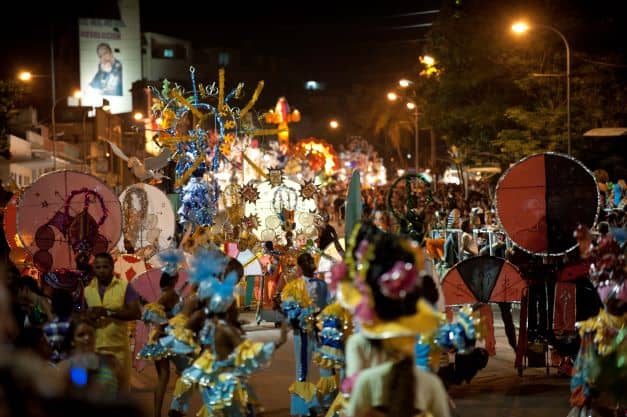
Santiago de Cuba is known for being the carnival capital of Cuba. Every year in late July, the center of Santiago transforms into a kaleidoscope of music, dance, drums, and colors for around a week.
In Santiago de Cuba, the carnival dates back to the end of the 17th century when it was called the Mamarrachos celebration.
Mamarrachos were held in the summer and winter months to celebrate the end of the harvest season and the start of the pre-Lenten season, a Christian tradition.
From there, it developed into the huge explosion of dance and extravagance you can immerse yourself in today.
The whole city turns into one large party, and this period also coincides with the Cuban national day, the 26th of July.
5. The Unique Architecture Cuba Is Known For
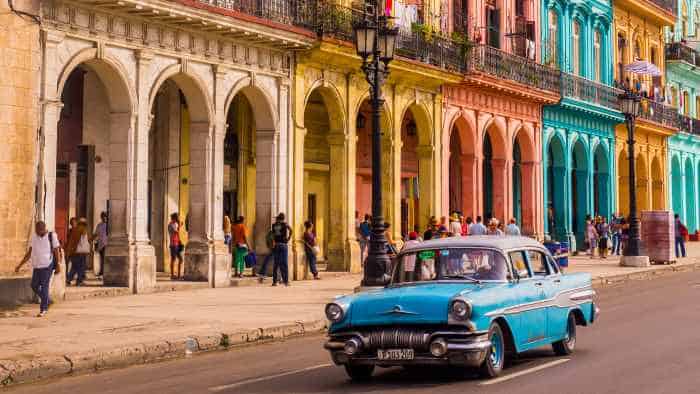
The Cuban architecture in Havana, Trinidad, Santiago de Cuba, and other colonial cities in Cuba was heavily influenced by the Spanish colonial rulers who started the city constructions in Cuba early in the 16th Century.
Cuba also had several important ports on the colonial trade routes between the old and the new world and had visitors (and immigrants) from all corners of the planet.
The key architectural trends from the early years came from Neoclassicism, influenced by European tradition. In Cuba, this style evolved from a mix of Caribbean “tropical features” into a style that has been called Spanish Baroque.
Things like rejas, metal bars covering windows that enabled improved air circulation, and sheltered walkways were added as clever protection from the fierce sun and tropical storms.
For centuries, Cuba’s unique mix of cultural and artistic influences has led to the eclectic and diverse architecture that it is now known for.
6. El Capitolio Is Not Inspired By The White House!
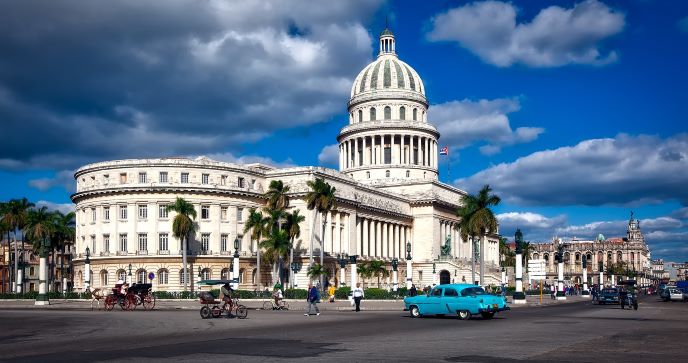
El Capitolio, or the capitol building in Havana, has a remarkable resemblance with the white house in the US, only it is microscopically larger and richer in detail.
According to the architect, the White House is not the inspiration for the building. Instead, the dome is inspired by the Panthéon in Paris, which Tempietto also inspired in Montorio in Rome.
El Capitolio was built over three years in the 1920s, costing around 17 million American dollars. When it was finished, it was the tallest building in Havana until the 1950s.
Inside is the world’s third-largest indoor statue, the Statue of the Republic cast in bronze and covered with 22-carat gold leaf.
Embedded in the floor in the center of the main hall is a replica 25-carat diamond, which marks Kilometro Zero for Cuba.
The Cuban Congress lived in the building until 1959. After the revolution, Congress was abolished, which caused the building to fall into disrepair until recent renovations.
The Capitolio’s outside and inside are impressive, and you can take a guided tour to learn the building’s history.
7. The Famous Cuban Coffee

It is not just that Cuba is known for producing amazing coffee; it is also the way the Cubans take their coffee for it to be real Cuban coffee.
The most common way to have coffee in Cuba is with a small cup of really strong espresso and a lot of sugar. For Cubans, coffee (or anything else) is not sweet enough.
Coffee production has a long history in Cuba; it has been cultivated since the mid-18th century.
Production in eastern Cuba increased dramatically during the 19th and early 20th centuries, and during its peak period in the 1950s, Cuba exported more than 20,000 tons of coffee beans every year.
After the Cuban revolution and the nationalization of the coffee industry, production slowly declined until it reached all-time lows during the “special period,” the recession in the 1990s.
Now, coffee is just a tiny part of the Cuban trade. Cuban coffee farmers are obliged to sell the vast majority of their coffee harvests to the government at regulated prices, apart from a small percentage of the coffee they can sell to tourists.
You can deep-dive into how to order your Cuban coffee like a pro in this article by Wanderherway.
8. Why Are There Classic American Cars In Cuba?

Classic American cars were imported into Cuba in the first half of the 20th Century. This was when the US and Cuba were friends, and the US had a great influence on Cuban business after the Spanish-American war.
Then, after the revolution, the sanctions against Cuba started after a complicated series of events, and Fidel Castro banned the importation of American cars and mechanical parts.
But Classic American cars continued to be used in the country, and people fixed and repaired them with whatever almost-fitting spare parts they had—and still do!
So today, Havana is famous for its bright-colored American cars roaming the streets of the city.
Many drive as tour taxis and offer one-hour sightseeing tours. A one-hour tour with a classic American car is around €35, and if you don’t want to pre-book, you can hail one in Parque Central.
9. What Is Special About Cuban Style Salsa?
Cuba is notoriously known for its vibrant music scene and also for its Cuban-style salsa, the Salsa Casino.
Although salsa does not originate from Cuba (it was actually developed by Puerto Ricans and Cubans living in New York in the late 1960s and early 1970s), it quickly arrived in Cuba.
Cuban-style salsa is salsa with a bit of a Cuban twist. The biggest difference is that in the Cuban salsa, the Salsa Casino, the couple dances round figures instead of in a line.
The Cuban son sound, a characteristic sound that uses African rhythms and Cuban percussion instruments, is also at the base of the Cuban salsa style.
The son is all about the subtle notes, and even though the Cuban salsa is described as more aggressive, the leading is also very subtle but very precise.
The Golden Cuban Rum

One particular thing about the famous Cuban rum (Cuban; ron) is that rum in Cuba is made from molasses, a by-product of sugar refining, which is different from other producers in Central America.
Rum experts agree that molasses adds a smokiness and rich flavor to the rum, giving it an unbeatable taste. Molasses is squished sugar cane made into a paste with brown sugar to extract the juice.
Then, it is placed in tanks with water and specially cultivated yeast to ferment. The end result, vino de caña, is then distilled in copper-lined columns stills.
When Fidel Castro seized power in the late 50s, he nationalized the rum distilleries. Wealthy rum-producing families like Bacardi and Arechabala, which produced the Havana Club, had to flee the country to Puerto Rico.
The Cuban government took over Bacardi’s production and nationalized the Havana Club brand, which is still in production today and is still famous worldwide.
There are currently around a dozen rum distilleries in Cuba, and the best-known rum that Cuba is known for is from eastern Cuba. Experts repeatedly agree that the best Cuban rum is the Havana Club Selección de Maestros, produced in Santiago de Cuba.
11. The Fateful Cuban Revolution
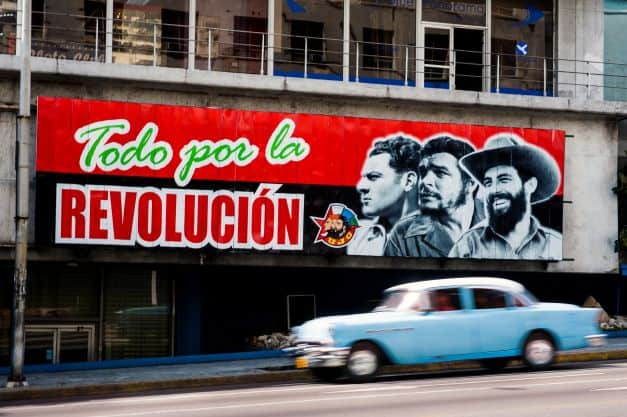
The December 1958 Cuban revolution had a huge impact on world politics for the next few years and shaped the future of eleven million Cubans for the next six decades.
The revolution happened after more than six years of guerilla war against Fulgencio Batista, who also took power in Cuba in a coup in 1953.
The US generally liked Batista because of his liberal economic policy around foreign investment and business on the island. At the same time, he was generally detested inside Cuba due to his ruthless domestic rule.
During Batista’s rule, many opposition and protest groups existed in Cuba, and student demonstrations and riots occurred. There were several opposition groups and leaders, not just the 26th of July movement led by Fidel Castro.
Castro and others ran their guerilla campaign from the Sierra Maestra mountain range west of Santiago de Cuba, among other places, growing their domestic support.
At the same time, Batista relied on help from the US to quelch the riots and opposition.
A lot of things happened in and with Cuba in the 1950s. Due to how the events unfolded when the revolution succeeded in December 1958, it was Fidel Castro and his supporters who came out victors.
The Battle Of Santa Clara
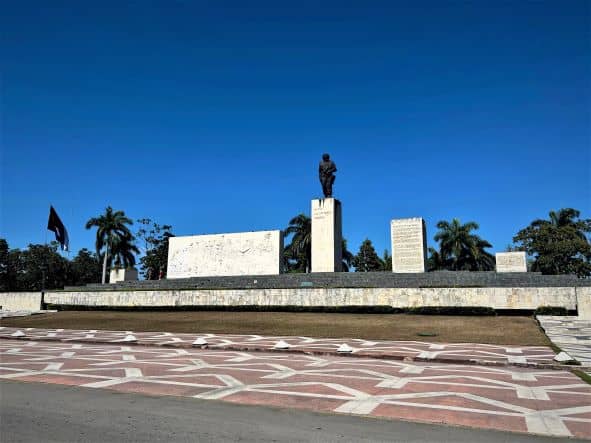
The battle of Santa Clara City in December 1958 was decisive for the outcome of the Cuban Revolution.
Santa Clara fell, and President Batista panicked and fled the country on New Year’s Eve. In doing so, he left the rule of Cuba to be taken over by the revolutionaries.
At this point, Fidel Castro was in Santiago de Cuba, while his comrades Emilo Cienfuegos and Che Guevara were the commanders leading the battle in Santa Clara, close to Havana.
Fidel sent his commanders to Havana to ensure the capital’s safety. At the same time, he himself set out on a victory journey across the country, speaking to the population to gather support and present himself as the new leader.
As Fidel Castro entered Havana on January 8th, 1959, he appointed Cuba’s first president and was himself sworn in as prime minister on February 16th.
Take the bus to Santa Clara from Havana, or book a taxi colectivo.
12. What Is Exclusive About Cuban Music Culture?

Cuba simply would not be Cuba without music. Cuban music culture is a mix of musical heritages from all the continents and cultures that have influenced Cuba, more or less voluntarily.
The Spanish conquerors, the African slaves, the refugees from Haiti, the traders of the world passing or residing, the list is long.
Cuba has five basic genres of Afro-Cuban music; these include rumba, son, cancion Cubana, danzon, and punto guarjira. European dances and folk music also slowly merged with African rhythms and dance.
The result involves a particular ambiance of soulful and energetic music, using conga drums, maracas, claves, scrapers, and bells.
Since the 19th century, Cuban music has grown increasingly popular across the globe. It has contributed greatly to the development of many musical styles and genres, especially in Latin America, the Caribbean, West Africa, and Europe.
Cuban music includes rhumba, Afro-Cuban jazz, salsa, many West African styles, Spanish fusion genres, and a wide variety of genres in Latin America. It is often viewed as one of the most influential regional music in the world, not just in Cuba.
13. The Enigmatic Sierra Maestra Mountain Range Secrets

The Sierra Maestra is a mountain range in southeast Cuba that runs across the south of the old Oriente Province.
The mountain range rises steeply from the coast and is situated west of Santiago de Cuba city, mainly in the Santiago de Cuba and Granma Provinces. The highest point in the Sierra Maestra is Pico Turquino, at just under 2000 meters.
The Sierra Maestra has a long history of guerrilla warfare, serving as a hiding place for the underdogs fighting for the cause they believed in.

It started with the native Tainos in Cuba 500 years ago, followed by several wars and minor conflicts during the history of Cuba.
After Fidel Castro returned from exile in Mexico to Cuba in 1956, he and other survivors from the failed 1953 attack on Moncada Barracks (when Fidel was sent to prison on Isla Juventud) hid in the Sierra Maestra mountains.
The mountains became the headquarters of the 26th of July movement, Fidel’s resistance group, until the Cuban Revolution at the end of 1958.

The Sierra Maestra Mountain Range covers a vast area and is also home to the Turquino National Park, which you can read about in number 22.
For frisky hikers, it is possible to join an organized tour here and check out the revolutionary HQ firsthand. I did this hike, and the pictures you see above are from my visit – I totally recommend it.
14. Extraordinary Colonial Trinidad Cuba History
Today, Trinidad is a cultural gemstone in Cuba for one particular reason.
Its quick rise to sugar wealth and fall from the throne due to changes in regional sugar production left the city unchanged in a development backwater for centuries.
Today, the whole city is still like an image frozen in time, showing a piece of colonial Cuba as it was in the 17th and 18th centuries.
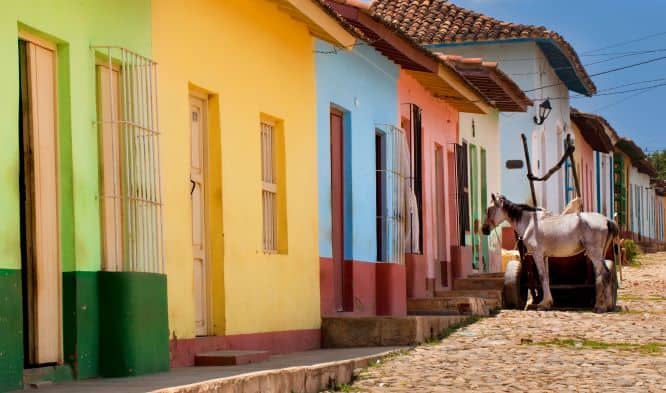
The streets, architecture, cobblestoned squares, and remnants of the sugar production in the Valley of the Sugar Mills tell a tale of colonial Cuba.
I have visited Trinidad several times in the last five years, and I recommend you go to experience firsthand the rich but short, lively history of Trinidad as the wealthiest and possibly the most important city in Cuba at one point.
Only fifteen minutes outside the city is the pristine paradisiacal beach Playa Ancon, with crystal-clear waters, snorkeling, and boat rides.
A short drive away is also the city of Cienfuegos, La Perla Del Sud, and the Bay of Pigs.
15. Distinct Cuban Art Style And History

Cuba is known for its unique and incredibly diverse art scene, a blend of cultural inspirations from South America, Africa, Europe, and North America.
The Cuban art scene has always been influenced by the complicated history of Cuba, as well as the diverse demographic of the island.
Visual symbols used in Cuban art from the colonial era, European Impressionism and Cubism, Mexican muralism, and elements from North America and Africa are all part of the mix.
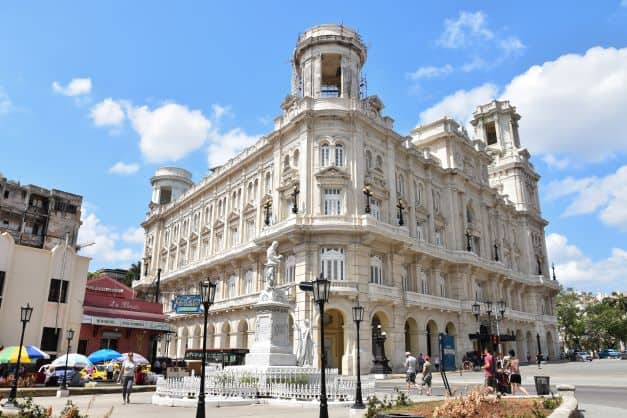
In Cuba, politics and art are not very far apart. When political and social conditions changed, as they did frequently, so did the art sphere of the country.
The historical visual arts have been one of the strongest parts of Cuba’s cultural display for a long time. Still, it is its contemporary art that became known and praised internationally.
It is viewed as particularly assertive, especially after the growth of Cuba’s young creatives in the 1980s.

Contemporary Cuban art is versatile and rich, but unfortunately, it is also sometimes marginalized because of the restraints placed upon artistic expression under the umbrella of politics.
Nevertheless, many contemporary Cuban artists are featured in some of the world’s most renowned museums and art galleries.
16. Why Is Baseball Cuba’s National Sport?
Baseball is a huge sport in Cuba. It was introduced in the 1860s by immigrants and traders from the United States. Nemisio Guillo brought the first ball and bat to Cuba.
He was a Cuban student returning to Cuba after studying in the US, bringing baseball with him, which also made him a name in the sport. Like any other sport in Cuba, baseball is not separated from politics, not even from the start.
First, it was perceived as a threat to the Spanish colonial rulers, as it was competing with the Spanish national sport of bullfighting in popularity.
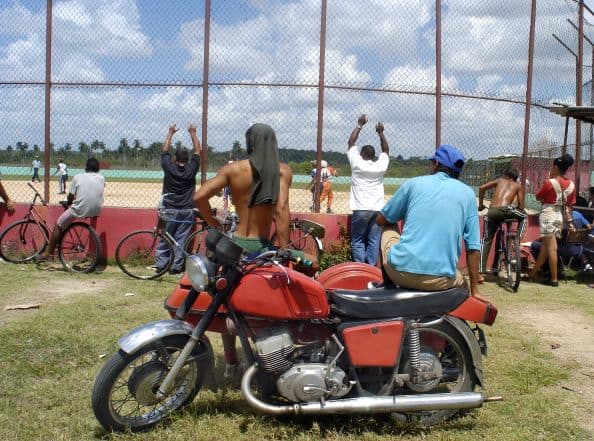
Because of this, it also became a peaceful means of political protest used among Cubans to signal Cuban nationalism and opposition to colonial Spain up until the Spanish-American war.
The Cuban Baseball League was established in 1878 and slowly evolved into the Cuban Winter League, which played until Fidel Castro abolished all professional sports in the 1960s.
Baseball And The Revolution
As professional sports were decided to promote principles opposing the Cuban revolution, the idea of sports had to be rewritten in order to support the revolutionary principles better.
Fidel Castro did this by connecting the president to the glory years of the Amateur Leagues in Cuba when workers of the sugar mills played the sport and made it reflect revolutionary ideas.
In this way, baseball was given the task of motivating nationalism, promoting cooperation among nations, and promoting fitness and military readiness in support of the Cuban revolution.
One of the greatest duties of all Cuban athletes was to represent their country through excellence in sports.
A primary goal was also the hope that if Cuba succeeded in sports competitions, these triumphs could portray the Cuban revolution in a positive light and give Cubans a sense of pride and nationalism for the Revolution.
Today, baseball is a very popular and still important sport that Cuba is known for internationally, and the country hosts many games throughout the year.
If you decide to visit during a game, be sure to experience the frenzy firsthand by watching a game at the stadium!
17. The 9 UNESCO World Heritage Sites In Cuba
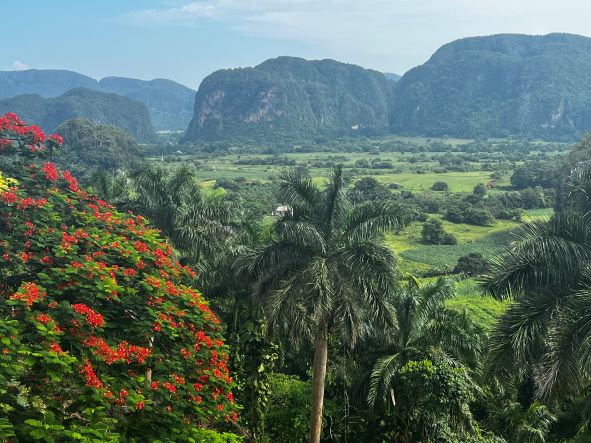
Cuba is home to a remarkable nine UNESCO World Heritage Sites, which is the fifth-highest number in Latin America and quite exceptional for a tiny Caribbean island.
These are:
- Old Havana and its Fortifications
- Trinidad and Valle de Los Ingenios
- Vinales Valley, west of Havana
- Desembarco del Granma National Park
- Historic Center of Cienfuegos
- Alejandro de Humbolt national park in eastern Cuba
- San Pedro de la Roca Santiago de Cuba
- Archeological Landscape of the first Coffee Plantations in eastern Cuba
- Historic Center of Camaguey
18. Rumors Of Cuban Food Traditions Are Wrong!
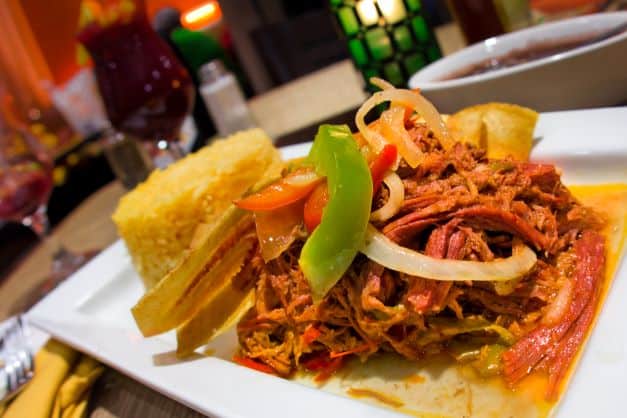
Before I went to Cuba for the first time, I was told that I should bring my own spices, as Cuban food is known for being bland and boring.
Now, that is not true; Cuban food traditions are as versatile and colorful as the island’s people and culture. It is not very spicy, but it is super tasty.
Cuban cuisine is a result of the country’s diverse history of people and cultures merged together here, as well as the tropical ingredients used in Cuban cooking.
You will mainly find meals influenced by Spanish, African, indigenous, and other Caribbean cultures and tastes. The ingredients used are normally determined by what is available, which is normally what is in season.
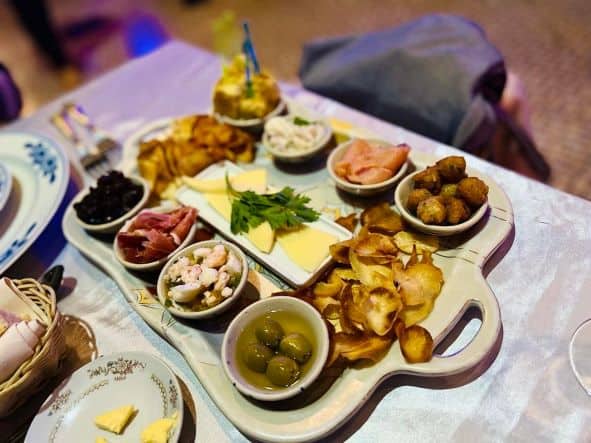
A popular starter is tostones rellenos, which are fried plantains stuffed with anything from garlic shrimp to spicy beef.
One of the most popular comidas (dinners) in Cuba is Ropa Vieja (my favorite), stewed shredded beef slow-cooked in fresh tomatoes, onions, peppers, garlic, and wine; super tasty!
Fried pork is another (most things are fried in Cuba, in oil), or rice with fried eggs. Or, ground beef a la habanera, which is a fried stew with ground beef with seasonings, tomato sauce, potatoes, and olives.
19. The Vibrant Nightlife Cuba Is Known For
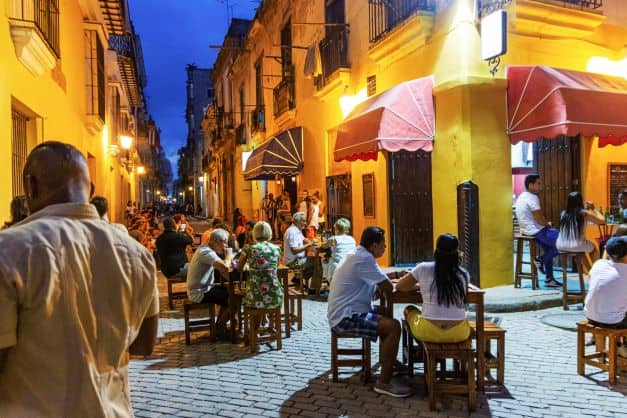
Cubans like to party, whether it is a celebration like birthdays or Mother’s Day (the most important day in Cuba), huge carnival fiestas, or dancing the night away on the Malecon or in a nightclub.
The most important ingredients in any Cuban party are music, dance, rum, and good food (in that order).
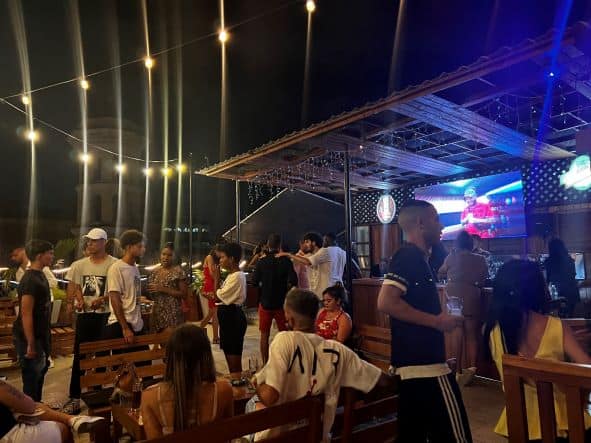
“Every town” has a Casa de la Musica, with live music and bands playing, dance floors, and regular events. I enjoy visiting Casa de la Musica in Central Havana, where there is always live music and lots of people.
Even if you just go to a bar, there may be live music, super loud, and people dancing between tables if there is no dance floor. Or outside, on the street.

Havana, the capital of Cuba, has a vibrant nightlife with a variety of different places you can go, from huge dance shows to clubs to intimate bars or authentic or fancy restaurants.
20. Cuban Traditions | Santeria Afro-Cuban Religion
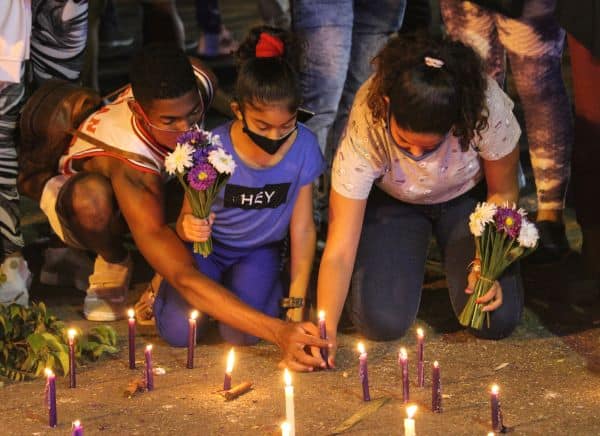
The Cuban Santeria religion is a mix of Catholicism that was brought here with the Spanish and the West African Yoruba that arrived with enslaved Africans.
Today, Santeria is very much alive as a unique fusion of Catholic practices and African folk beliefs. Santeria is practiced in Catholic churches right next to the Catholic saints. Every Santeria orisha, saint, has a catholic counterpart.
Santeria is visible throughout Cuba in the many shops that sell religious ornaments and saints and special emblems that represent a saint or prayer.
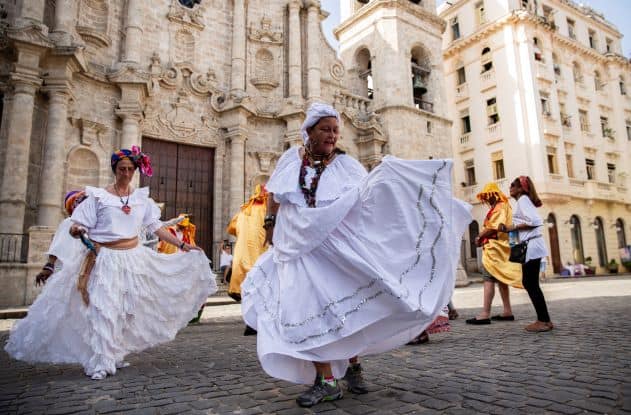
You will see people wearing bracelets, hairbands, or some sort of Santeria token in the streets, often with the colors of their primary orishas, saints.
Once, while walking in Central Havana, I passed by a Santeria celebration (which is normally a loud and colorful event).
I was actually invited in and got to see the dance where the orisha, saint, descended upon a religious figure, passing messages from spirit to the living!
In every celebration in Cuba, the saints are part of the fiesta and will be served cake, food, cigars, and, of course, a bit of rum.
Santeria does have a belief in brujeria, witchcraft, as a motivation for people to do good and avoid negative energies and bad spells or malicious actions.
You can do an Afro-Cuban Religion Tour in Havana to learn more about it!
21. Classic Cuban Cocktails

The famous cocktails Cuba is known for today are, believe it or not, closely connected to the prohibition years in the US!
When the USA had a nationwide ban on the production, import, transport, and sale of alcohol from 1920 to 1933, Cuba was the solution, only a “stone’s throw” away.
Cuban bartenders, cantineros, were trained and became skilled at cocktail recipes that suited the American taste, and Cuba became a secret pleasure island for the rich and famous.
Classic Cuban cocktails you might want to try are Mojitos, Cuba Libre, El Presidente, Daquiri, and Cuban Canchanchara (which is club soda, lime, white rum, and honey syrup).
Head out for one of these rooftop bars in Havana, and keep an eye on the bartender, as cocktails in Cuba are not made strictly after the rules of 2 or 4 centiliters!
22. Spectacular Cuban National Parks
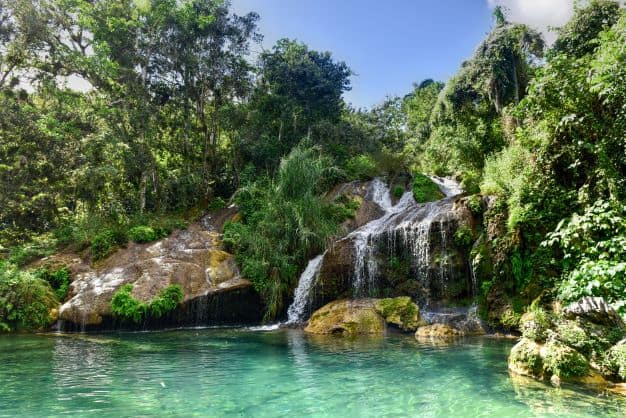
As you may have noticed, two of the 12 Cuban national parks are actually on the UNESCO World Heritage Site list of protected areas in the world.
Despite its size, the rather small island is known for its vastly diverse nature.
- Cienega de Zapata National Park
- Vinales National Park
- Guanahacabibes National Park
- Jardines de la Reina National Park
- Caguanes National Park
- Pico Turquino National Park
- Topes de Collantes National Park
- Desembarco del Granma National Park
- Alexander Von Humboldt National Park
- Sierra Cristal National Park
- La Bayamesa National Park
- La Mensura-Pilotos National Park
23. Cuba Is Just 90 Miles From Key West!

From the southernmost point of Key West, on the end of Simonton Street, the distance to Cuba is only 90 miles.
If one were able to travel by boat between Cuba and the US (which one is not), it would be a mere 4-hour trip.
An increasing number of Cubans are trying to make this boat trip anyway, with the objective of reaching Miami and starting a better life. Currently, the Cuban part of the Miami pueblo is a staggering 70 % of the city’s population.
24. Almirante Oquendo Shipwreck From The Spanish American War
Outside Santiago de Cuba, there is a shipwreck dating from 1898, from the battles of the Spanish-American War.
The Almirante Oquendo from the Spanish Navy was stationed in Santiago de Cuba in the spring of 1898 as tensions rose between the United States and Spain.
As US land forces threatened to take Santiago de Cuba in July 1898, the captain decided that the best chance to escape was to head for the open sea – running down an American naval blockade.
The battle with several American vessels was fierce, and a lot of sailors were killed and wounded.
At one point, the captain of Almirante Oquendo was mortally wounded and ordered his ship to be scuttled. She beached about 6.8 nautical miles kilometers west of Santiago de Cuba at around 1030 in the morning.
Almirante Oquendo lost 80 dead in the engagement. Today, a century and more later, the battleship that had such a violent faith is a quiet and beautiful reef outside Santiago de Cuba.
Why not go see it for yourself? The wreck is just a short boat trip from Santiago, and you can go snorkeling or scuba diving.
FAQs Cuba Travel
Why are US citizens not allowed to travel to Cuba?
This is NOT correct. US citizens ARE ALLOWED to travel to Cuba.
Americans can choose a reason for Cuba travel among 12 pre-approved reasons for traveling to Cuba, determined by the US Government.
Can US citizens travel to Cuba as a tourist?
Technically, US citizens are NOT allowed to travel to Cuba as a tourist.
Americans choose between 12 pre-approved reasons for Cuba travel, among which the most common one is “to help the Cuban people”.
American citizens still need to buy a tourist card, also called a tourist visa, to enter Cuba.
What are the 12 requirements to travel to Cuba?
You can read about the 12 pre-approved reasons to travel to Cuba for US citizens here.
The easiest and most common reason for Cuba travel is “to help the Cuban people”. There is no paperwork or application process connected to this; you just choose your reason and state that reason if anyone asks.
How Do I get a tourist card for Cuba?
You can buy a tourist card online from Easy Tourist Card or from the Cuban embassy in your country.
You might also be able to buy a Cuban tourist card from your airline or at the airport prior to departure.
A tourist card can be bought at Miami International Airport’s check-in counter for American Airlines and Delta Airlines.
How Do I Get A Tourist Visa For Cuba?
A tourist visa is the same as a tourist card for Cuba. You can buy it from the following places:
- Buy one online from Easy Tourist Card
- Buy one from your airline if they offer this
- Buy one at the airport of departure if they offer this
- Buy one from the Cuban Embassy in your country
What documents do I need to travel to Cuba?
You need the following documents to travel to Cuba:
- Passport valid for 6 months after the date of entry
- Cuban tourist card / tourist visa
- Proof of travel insurance, including health insurance
- Fill out the d’viajero.cu digital document before your journey
Do Americans need to be vaccinated to enter Cuba?
No, specific vaccines are not required before entering Cuba. Your country’s health department probably has recommendations for what vaccines you should consider.
What happens if a US citizen travels to Cuba?
Nothing happens if a US citizen travels to Cuba. Instead, they must choose one of the pre-approved reasons to travel to Cuba and buy the PINK Cuban tourist card, also called a tourist visa.
Selected airlines sell this visa/tourist card, or you can buy one online.
Is Travel To Cuba Allowed Right Now?
Yes, Cuba travel is allowed right now.
In addition, American citizens must choose one of the 12 pre-approved reasons for traveling to Cuba (Americans can not travel as “tourists”) and follow some simple guidelines for traveling in Cuba.
Wrap-Up | What Is Cuba Known For?
Maybe you already knew, but if not, I hope you no longer have information gaps as to what Cuba is known for.
Hopefully, the diverse variety of wonders and beauty Cuba is known for has intrigued you. If you are curious, this page has more information and travel tips for Cuba!
Related blog posts:
How to get a tourist card for Cuba By An Expert (Easy Guide)
Sensational 7 Days In Cuba Itinerary By A Local!
11 Iconic Cuba Landmarks From A Local: Journey Through Time And History!
